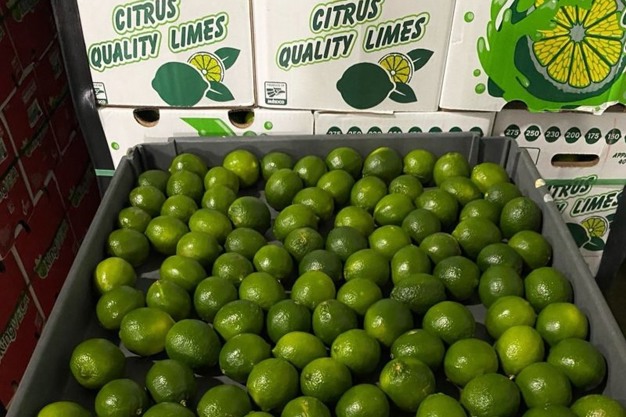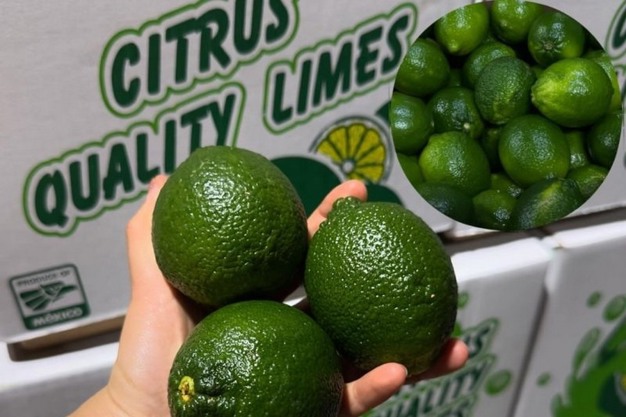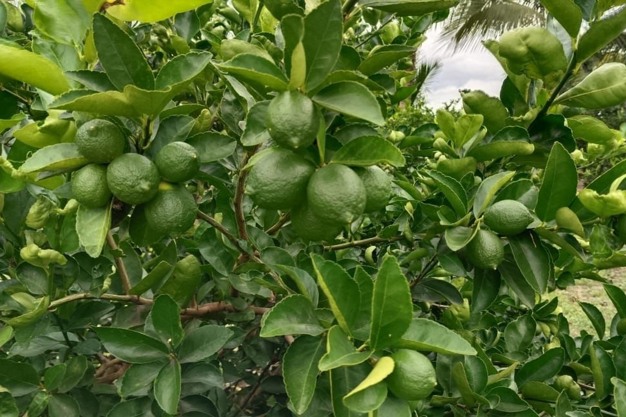The effects of the changing wetter climate in Mexico can be seen with somewhat lower supply to the U.S. over the festive and winter season. Fátima Morales, exporter of Persian limes from the company Moes Produce in Veracruz, México, says, "The U.S. market for Persian limes is entering a period of adjustments influenced by supply variability and weather conditions in key producing regions of Mexico. From December to March, demand generally increases due to the holiday season and the onset of winter, when consumers seek vitamin C-rich products."

Morales visits growing areas across Mexico and compiles regular updates on the Mexican lime production and exports, as well as market prices in their key market of the U.S. She says production is expected to decline as the year draws to a close. The lime market has also fallen for the sixth week in a row, although the rate of decline has slowed, "with December typically marking a drop in lime harvests in Mexico. Supply may be more limited until mid-January, when volumes usually begin to recover. This lower availability in December could drive up prices to meet holiday demand."
Size preferences and pricing
"Smaller sizes of lime 250's, 230' will likely continue to be in high demand from U.S. brokers, due to the previous stockpiling of larger sizes. The preference for smaller sizes may persist if buyers focus on strategically managing their inventory. Larger sizes 110's, 150' are currently experiencing less demand, which has led to price stabilization or even slight declines. However, if inventories decrease and there is a shortage of smaller sizes, prices for larger sizes could see a rebound by late February," states Morales, based on what she sees across farms and pack houses in Mexico.

Weather factors and impact
Morales says weather conditions in Mexico's key growing regions of Veracruz, Michoacán and Colima will be critical in the coming months. "Late rains or cold fronts could impact both the quality and volume of the harvest. Additionally, the effect of potential cold snaps could further limit availability in early 2025, particularly in January and February."
Import trends in the U.S.
"During this period, imports from Mexico will remain the primary supply channel for the U.S. market. Importers should closely monitor potential logistical disruptions and evolving demand trends. As Mexican production recovers by March, prices may stabilize, and availability may improve heading into the spring season."
Her advice to exporters is to pay careful attention to inventory management, targeted promotions and to maintain supply chain flexibility. "Continuously monitor stock levels in the U.S. to avoid market oversaturation and maintain competitive pricing, especially for larger sizes. For targeted promotions, leverage high seasonal demand from December to January to push less popular sizes through discounts and targeted promotions. For supply chain flexibility, maintain close communication with brokers and distributors to adjust exports according to changing market conditions."

Morales concludes by saying, "From December to March, the Persian lime market in the U.S. will be marked by fluctuations in availability and pricing, due to seasonal and weather-related factors. Exporters should adopt a flexible approach to capitalize on demand for specific sizes and anticipate potential supply disruptions."
For more information:
Fátima Morales
Moes Produce
[email protected]
https://www.instagram.com/moesproduce?r=nametag
